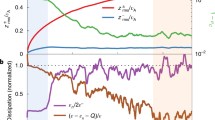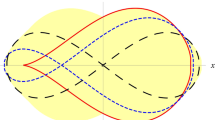Abstract
IT has been known for some years that the seasonal and diurnal variations, and the geographical distribution of the maximum electron density N in the F2 layer, the main observable region of the ionosphere, are anomalous in that they do not conform to the simple Chapman theory of ionization production, according to which N should be proportional to cos χ ½, where χ is the zenith distance of the sun. For example, in temperate and high latitudes in the northern hemisphere, the noon values of N show a minimum in mid-summer and a maximum in mid-winter, a variation which is exactly out of phase with theory; while in the southern hemisphere in temperate latitudes noon N exhibits maxima near the equinoxes and minima in mid-summer and mid-winter.
This is a preview of subscription content, access via your institution
Access options
Subscribe to this journal
Receive 51 print issues and online access
$199.00 per year
only $3.90 per issue
Buy this article
- Purchase on Springer Link
- Instant access to full article PDF
Prices may be subject to local taxes which are calculated during checkout
Similar content being viewed by others
Author information
Authors and Affiliations
Rights and permissions
About this article
Cite this article
MARTYN, D. 'Anomalous' Behaviour of the F2 Region of the Ionosphere. Nature 155, 363–364 (1945). https://doi.org/10.1038/155363a0
Issue Date:
DOI: https://doi.org/10.1038/155363a0
This article is cited by
-
A qualitative method of estimating the interaction between diffusion and electrodynamic drift underF2 layer conditions
Pure and Applied Geophysics PAGEOPH (1965)
-
Combined Effects of Drift and Diffusion in the F2 Region
Nature (1964)
Comments
By submitting a comment you agree to abide by our Terms and Community Guidelines. If you find something abusive or that does not comply with our terms or guidelines please flag it as inappropriate.



